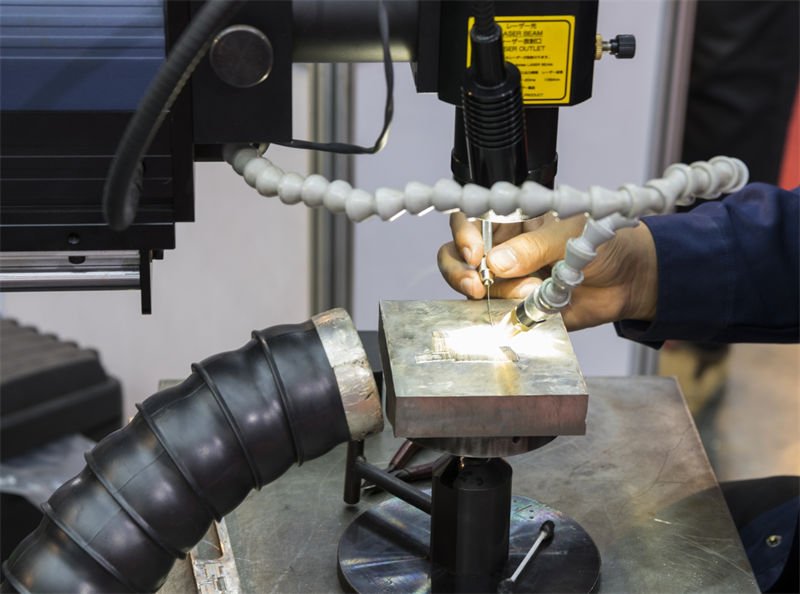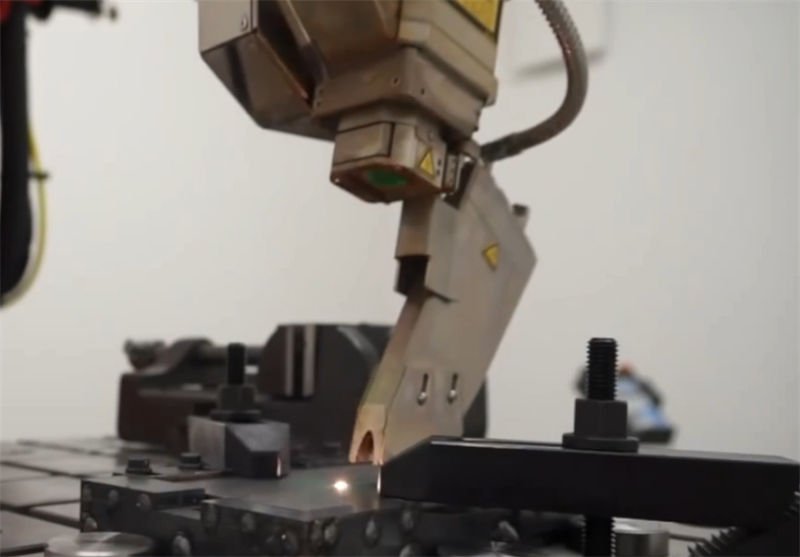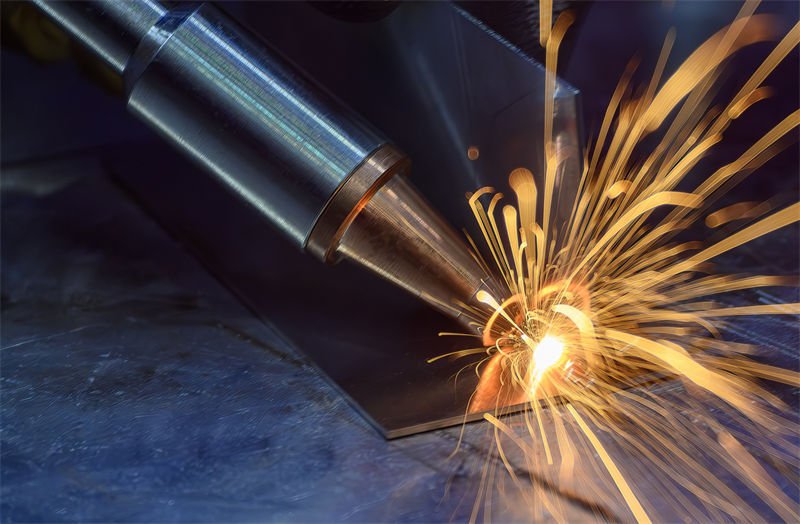
Have you ever watched a laser beam effortlessly slice through metal or plastic? It’s mesmerizing! But what truly captivates me is how these powerful machines can connect materials in ways that were once unimaginable.
Laser welding machines can join a variety of materials, from metals like steel and aluminum to non-metals such as plastics and ceramics. Each material type requires specific laser power settings for effective welding, ensuring strong and precise joints.
But how exactly does the power of a laser influence the welding process? Let’s dive into the fascinating world of laser welding and explore how different materials respond to this advanced technique.
Laser welding can be used on both metals and non-metals.True
Laser welding machines can weld metals like steel and aluminum, and non-metals such as plastics.
How Does Laser Power Affect Welding Different Materials?
Laser power plays a pivotal role in determining the success of welding different materials.
The appropriate laser power ensures efficient energy delivery for melting and joining materials without defects. For metals like steel, aluminum, and copper, higher power levels are often required due to their thermal properties, while non-metals like plastics may need lower power settings. Adjusting laser power according to material type and thickness optimizes welding quality.

Laser Power and Metal Materials
Steel Types
-
Low-carbon Steel: For thin sheets (0.5 – 1mm), 300 – 500W suffices. As thickness increases, power must also increase to ensure proper penetration. For instance, 1 – 3mm thick low-carbon steel typically requires 500 – 1000W.
-
Medium and High-carbon Steel: These require precise heat control to prevent defects. A thickness of 0.5 – 1.5mm generally necessitates 400 – 600W. As thickness increases to over 3mm, power may need to rise to around 1200 – 2000W.
-
Stainless Steel: This material demands high-quality welds with power ranging from 200 – 3000W based on thickness. The poor thermal conductivity of stainless steel means careful power adjustments are crucial.
Non-ferrous Metals
-
Aluminum Alloy: Known for high reflectivity, aluminum alloys demand between 500 – 3000W depending on thickness. Special processes might be needed to enhance laser absorption.
-
Copper Alloy: Due to its high thermal conductivity, copper requires even more power, potentially up to 3500W for thicker materials.
-
Titanium Alloy: Titanium welding under inert gas protection needs precise control, using powers from 300 – 3000W based on thickness.
Laser Power and Non-metal Materials
Plastics
-
Thermoplastic Plastics: Low melting points make these easier to weld with powers between 100 – 600W. Choosing a compatible laser wavelength enhances efficiency.
-
Thermosetting Plastics: With different welding mechanisms, these require powers around 200 – 800W.
Ceramic Materials
Ceramics need pulsed lasers with powers from 500 – 1500W for welding. Special methods like adding intermediate layers can help prevent cracking.
Composite Materials
For fiber-reinforced composites, a power range of 200 – 1000W is typical, considering the diverse absorption characteristics of fibers like carbon or glass.
Impact of Welding Speed and Spot Size1
Fast welding speeds can lead to insufficient penetration, while slow speeds might cause excessive heat zones. Spot size affects energy density, with smaller spots suitable for precision tasks.
Adjusting these parameters alongside laser power is vital for achieving desired welding outcomes.
Steel needs 500-1000W for 1-3mm thickness welding.True
Low-carbon steel of 1-3mm thickness requires this power range.
Plastics require higher laser power than metals for welding.False
Plastics need lower power (100-800W) compared to metals.
What Role Does Material Thickness Play in Laser Welding?
Material thickness significantly influences the parameters and outcomes of laser welding, impacting precision and penetration.
Material thickness in laser welding dictates the required laser power, welding speed, and spot size to achieve a strong, defect-free weld. Thicker materials generally need higher laser power and slower welding speeds to ensure adequate penetration and fusion.

Understanding Material Thickness in Laser Welding
Material thickness plays a crucial role in determining the key parameters of laser welding, including laser power, welding speed, and spot size. Here’s how it impacts each aspect:
-
Laser Power Requirements: Thicker materials require more energy to penetrate and create a solid weld. For instance, low-carbon steel with a thickness over 3mm may need laser power ranging from 1000 to 2000W, as opposed to thinner sheets that require less power. Similarly, aluminum alloys thicker than 3mm demand 1500-3000W due to their high reflectivity and thermal conductivity.
-
Welding Speed: The welding speed must be adjusted based on material thickness. Faster speeds might be suitable for thin sheets, but for thick materials, slower speeds ensure thorough melting and fusion. For example, thin aluminum might experience incomplete fusion if welded too quickly.
-
Spot Size: A smaller spot size is often used for thin materials to concentrate the energy and achieve precision, while a larger spot is suitable for thicker materials to distribute heat more evenly.
Practical Examples and Considerations
| Material Type | Thickness Range | Required Laser Power |
|---|---|---|
| Low-Carbon Steel | 0.5-1mm | 300-500W |
| 1-3mm | 500-1000W | |
| >3mm | 1000-2000W | |
| Aluminum Alloy | 0.5-1mm | 500-800W |
| 1-3mm | 800-1500W | |
| >3mm | 1500-3000W | |
| Stainless Steel | 0.3-0.8mm | 200-400W |
| 2-4mm | 800-1500W |
These values highlight how material thickness correlates with necessary adjustments in laser parameters. Precise control over these factors is essential to avoid common defects such as porosity or incomplete fusion.
Challenges and Solutions
When dealing with thicker materials, there are potential challenges such as overheating or thermal stress. Techniques such as preheating can be employed to mitigate issues like cracking in copper alloys2 due to high thermal conductivity.
Additionally, choosing the correct shielding gas can prevent oxidation, especially in thicker stainless steel or titanium alloys. Proper gas flow helps maintain weld integrity by protecting the molten pool from atmospheric contamination.
Advanced Techniques for Handling Thickness Variations
Advanced laser systems now feature adaptive control technologies that automatically adjust parameters based on real-time feedback from the welding process. This capability is particularly beneficial for materials with varying thicknesses across a single workpiece, ensuring consistent weld quality throughout.
In conclusion, understanding the impact of material thickness on laser welding is vital for achieving optimal results. Engineers and operators must carefully select and adjust laser parameters to accommodate these variations, ensuring high-quality welds across diverse applications.
Thicker materials need higher laser power for welding.True
Thicker materials require more energy to penetrate and create a solid weld.
Thin materials require slower welding speeds than thick ones.False
Thin materials can be welded at faster speeds compared to thick ones.
How Do Non-Metal Materials Behave in Laser Welding?
Laser welding is not just for metals; non-metal materials like plastics and ceramics also benefit from this technology.
Non-metal materials in laser welding, such as plastics and ceramics, require precise power settings and laser wavelengths to achieve optimal results. Plastics benefit from low power settings due to their low melting points, while ceramics require higher power to overcome their hardness and brittleness.

Understanding Plastic Behavior in Laser Welding
Plastics are increasingly used in various industries due to their versatility and cost-effectiveness. In laser welding3, thermoplastic materials like PP, PE, and ABS are suitable for welding because they soften upon heating. The key is using low power, typically between 100-600W, depending on the thickness. Thermosetting plastics, however, do not soften but rather char under excessive heat, necessitating careful power adjustments between 200-800W.
A crucial factor for successful plastic welding is the selection of an appropriate laser wavelength that matches the material’s absorption properties. This optimizes energy use and minimizes defects such as burn-through or incomplete welds.
Laser Welding of Ceramics
Ceramics present unique challenges due to their high hardness and brittleness. Successful ceramic welding often requires a pulsed laser with powers ranging from 500-1500W, coupled with specialized processes like adding intermediate layers to reduce stress and prevent cracking.
The table below outlines the typical power settings for ceramic welding based on thickness:
| Ceramic Thickness | Laser Power |
|---|---|
| 0.5 – 1mm | 500 – 800W |
| 1 – 3mm | 800 – 1500W |
Composite Materials in Laser Welding
Composite materials are diverse, often involving a polymer matrix reinforced with fibers like carbon or glass. These materials require careful consideration of both laser absorption characteristics and heat transfer properties.
For composites, power settings range from 200-1000W based on thickness. Attention to the laser’s interaction with different fibers is crucial. For instance, carbon fibers can absorb more heat than glass fibers, affecting the overall weld quality and requiring adjustments in laser settings.
Key Considerations
When working with non-metal materials in laser welding, several factors must be considered:
- Wavelength Selection: Ensure the laser’s wavelength aligns with the material’s absorption spectrum.
- Power Adjustment: Fine-tune power settings to accommodate material-specific characteristics and thickness.
- Welding Speed: Maintain appropriate speeds to balance weld quality and efficiency.
These considerations highlight the importance of understanding material behavior to optimize the laser welding process for non-metals.
Plastics require low power settings in laser welding.True
Plastics have low melting points, needing 100-600W for welding.
Ceramics need less power than plastics in laser welding.False
Ceramics are harder and more brittle, requiring 500-1500W.
Why Is Shielding Gas Important in Laser Welding?
Discover the critical role shielding gas plays in enhancing laser welding quality and efficiency.
Shielding gas is vital in laser welding as it protects the molten metal from atmospheric contamination, ensuring a cleaner weld. It also stabilizes the laser arc, reducing spatter and improving weld quality. The choice of gas affects the weld’s appearance, penetration, and mechanical properties.

The Role of Shielding Gas in Welding Processes
Shielding gas serves multiple purposes in laser welding. Primarily, it prevents atmospheric gases, such as oxygen and nitrogen, from reacting with the molten pool. This protection is crucial for materials like titanium and aluminum, which are prone to oxidation and embrittlement when exposed to air. Using an inert gas like argon or helium can safeguard the weld from these adverse effects.
Types of Shielding Gas
Different gases are used based on the material and desired outcomes:
- Argon: Commonly used due to its availability and cost-effectiveness. Argon provides excellent coverage and is suitable for most metals, ensuring minimal oxidation.
- Helium: Offers better penetration and is ideal for deep welds. It is particularly effective for materials requiring higher heat input.
- Nitrogen: Sometimes used with stainless steel to improve its corrosion resistance.
Effects on Weld Quality
The choice of shielding gas impacts several aspects of weld quality:
- Weld Appearance: Inert gases help achieve a smooth, clean surface without discoloration.
- Penetration Depth: Helium’s higher ionization potential allows for greater energy absorption, increasing penetration depth.
- Mechanical Properties: A proper shielding gas can enhance the ductility and toughness of the weld joint.
Flow Rate Considerations
The flow rate of the shielding gas must be optimized. Insufficient flow may lead to inadequate protection, while excessive flow can disturb the molten pool and laser stability. Proper calibration ensures consistent coverage without turbulence.
In practice, balancing these factors requires a careful assessment of the material properties and the specific welding conditions. Understanding how each element interacts within the laser welding process can significantly improve outcomes. For more insights on welding process optimization4, explore additional resources that delve into advanced techniques and technologies that enhance laser welding efficiency.
Case Studies and Practical Applications
Examining real-world applications where specific gases have been used can provide valuable insights. For instance, in aerospace applications, where weld integrity is paramount, helium is often chosen despite its higher cost due to its superior performance characteristics.
Challenges in Selecting Shielding Gas
While choosing the correct shielding gas is crucial, it comes with challenges such as availability and cost considerations. Moreover, each type of material may react differently under similar conditions, necessitating tailored solutions for diverse welding projects. To explore more about material-specific approaches, consider researching advanced welding techniques5 that address these complexities.
Argon is the most cost-effective shielding gas for laser welding.True
Argon is widely used due to its availability and cost-effectiveness.
Nitrogen increases the penetration depth in all laser welds.False
Helium, not nitrogen, increases penetration depth due to higher ionization.
Conclusion
Understanding what materials can be welded with a laser machine empowers you to optimize your welding processes. By considering factors like material type, thickness, and laser power, you can achieve outstanding results.
-
Explores how speed and spot size influence weld quality and precision.: Optimal spot sizes and high-quality lasers enable faster welding speeds, improved process stability, and reduced rework, resulting in higher … ↩
-
Explores strategies to prevent cracks in copper alloys.: Of crack formation during Al-Cu laser welding, transverse cracking was found to be the major type. The crack formation is associated with the IMC distributions … ↩
-
Learn about specific requirements for effective plastic welding techniques.: Laser plastic welding, also often referred to as through-transmission welding, is a process of bonding plastic using focused laser radiation. ↩
-
Gain insights into optimizing welding settings for better quality.: By carefully adjusting these laser welding parameters – power density, pulse duration, spot size, beam diameter, and welding speed – … ↩
-
Learn about advanced methods tailored to various material needs.: Six Advanced Welding Processes. The processes we’ll cover here are: Magnetic arc; Friction/Friction stir welding; Explosive; Ultrasonic; Laser; Electron beam. ↩



